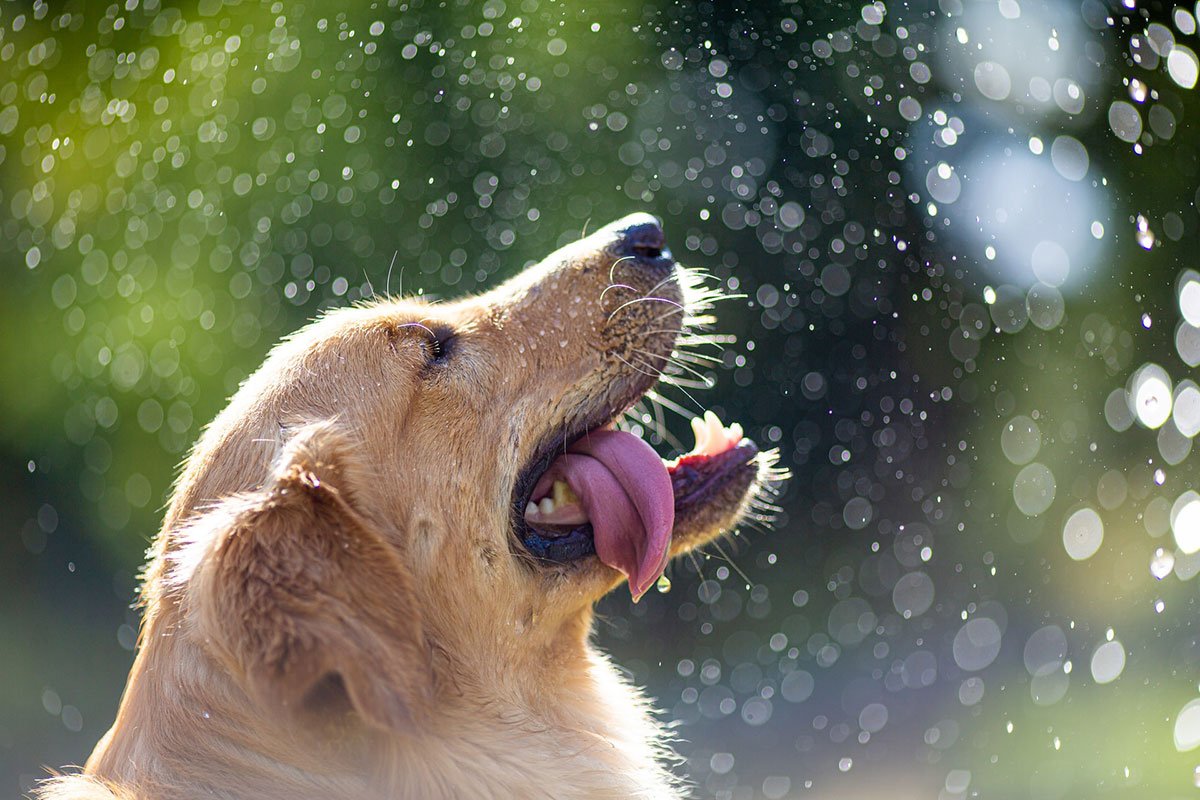Did you know the global shrimp market is set to hit over $74 billion by 2027? This shows how big a deal shrimp are in our diets. But what about our dogs? Can they safely enjoy shrimp too? In this guide, we’ll look at the good and bad of shrimp for dogs, helping you choose the best for your pet. lets answer the quistion of Can dogs eat shrimp?
Key Takeaways
- Shrimp can be a nutritious part of your dog’s diet, offering protein, omega-3s, and more.
- But, start with small amounts to prevent stomach upset or allergies.
- Make sure shrimp is cooked right to keep your dog safe and happy.
- Shrimp can be a fun treat or part of homemade dog food, but don’t replace their main meals.
- Talk to your vet before adding shrimp or new foods to your dog’s diet, especially if they have allergies.
Understanding the Nutritional Value of Shrimp for Dogs
Adding shrimp to your dog’s diet can be a great choice. It’s packed with protein content, amino acids, and omega-3 fatty acids. These nutrients are key for your dog’s health and happiness.
Protein Content and Amino Acids
Shrimp is a top-notch protein source. A 3-ounce serving has about 20 grams of protein. It also has all the essential amino acids dogs need for muscle and immune health.
Omega-3 Fatty Acids and Their Benefits
Shrimp also has omega-3 fatty acids, which are great for dogs. They help with inflammation, skin, and brain health. The EPA and DHA in shrimp are especially good for dog nutrition.
| Nutrient | Amount in Shrimp (3 oz serving) |
|---|---|
| Protein | 20 grams |
| Omega-3 Fatty Acids (EPA and DHA) | 0.3 grams |
Knowing about shrimp’s protein content, amino acids, and omega-3 fatty acids helps you decide if it’s right for your dog.

The Potential Risks of Feeding Shrimp to Dogs
Shrimp can be a healthy treat for dogs, but we must know the risks. As pet owners, we need to think about our dogs’ safety when trying new foods.
Feeding shrimp to dogs can be risky because of choking. Shrimp are small and hard, which can be dangerous. Make sure to remove shells, tails, and legs before giving them to your dog. Also, cut the shrimp into small pieces to avoid choking hazards.
Some dogs might have allergies to shrimp. This can cause skin problems, stomach issues, or breathing problems. Start with a small amount and watch your dog for any signs of allergy. If you see any issues, stop giving them shrimp.

Shrimp also have a lot of sodium, which can be bad for dogs. This can lead to dehydration or other health problems. Make sure to balance shrimp with other foods and talk to your vet about your dog’s diet.
Knowing the risks and taking steps to avoid them, we can safely give shrimp to our dogs. This way, they get the benefits without the dangers.
Can Dogs Eat Shrimp?
Yes, dogs can eat shrimp, but it’s important to do so in moderation and with proper preparation. Shrimp can be a tasty and nutritious treat for our canine companions. It’s crucial to understand the appropriate serving sizes and how to safely prepare it.
The Answer: Yes, but with Moderation
Shrimp is generally safe for dogs to consume, as long as it’s cooked thoroughly and served in moderation. Shrimp is a lean protein source that can provide your dog with essential amino acids and omega-3 fatty acids, which can offer various health benefits. However, it’s important to remember that shrimp can also be high in sodium and cholesterol. It should not become a regular part of your dog’s diet.
Preparing Shrimp for Your Furry Friend
When feeding shrimp to your dog, it’s essential to take the proper precautions. Here are some tips for preparing shrimp safely:
- Always cook the shrimp thoroughly to remove any potential bacteria or toxins.
- Peel and devein the shrimp to eliminate any hard shells or tails, which can pose a choking hazard.
- Avoid seasoning the shrimp with salt, garlic, or other spices, as these can be harmful to dogs.
- Serve the shrimp in small, bite-sized pieces to prevent choking.
- Start with a small serving size, such as 1-2 pieces per meal, and monitor your dog’s reaction.
By following these guidelines, you can safely incorporate shrimp into your dog’s diet as an occasional treat or addition to their regular meals.

Introducing Shrimp to Your Dog’s Diet
Introducing shrimp to your dog’s diet needs patience and caution. It’s exciting to add a new, healthy food to their meals. But, it’s important to do it slowly and carefully.
Starting with Small Portions
Start with small pieces or slivers of cooked, plain shrimp. This helps you see how your dog reacts. It also makes sure they don’t get sick or have allergies before eating more.
Monitoring for Allergic Reactions
- Watch your dog closely after they eat shrimp for the first time. Look for signs of allergic reactions like vomiting, diarrhea, or skin problems.
- If you see any bad symptoms, stop giving them shrimp right away. Talk to your vet.
- Slowly introducing new foods and watching closely is key to keeping your dog safe and happy.
By starting small and watching your dog, you can add shrimp safely to their diet. It’s a tasty and healthy choice for them.

The Best Types of Shrimp for Your Dog
Not all shrimp are safe for dogs. We must choose carefully to keep our pets healthy. Let’s look at the best shrimp for dogs, including wild-caught vs. farmed and shell-on vs. peeled.
Wild-Caught vs. Farmed Shrimp
Wild-caught shrimp are safer for dogs. They have fewer contaminants and more nutrients than farmed shrimp. Farmed shrimp might have chemicals and antibiotics, which can harm dogs.
Shell-On vs. Peeled Shrimp
Both shell-on and peeled shrimp have benefits. Shells add nutrients and fiber, but can be a choking hazard. Peeled shrimp are easier to digest but lack some shell benefits.
| Type of Shrimp | Nutritional Benefits | Potential Risks |
|---|---|---|
| Wild-Caught Shrimp | Higher in essential nutrients, lower in contaminants | May be more expensive |
| Farmed Shrimp | Generally more affordable | Potential exposure to chemicals, antibiotics, and other hazards |
| Shell-On Shrimp | Provides additional nutrients and fiber | Potential choking hazard |
| Peeled Shrimp | Easier for dogs to digest | May miss out on some nutritional benefits of the shell |
Knowing the differences helps choose the best shrimp for your dog. Always introduce new foods like shrimp in small amounts.

Shrimp as a Treat or Main Meal?
Should shrimp be a special treat or a main part of your dog’s meals? The answer is to find a balance. This balance meets your dog’s nutritional needs and the benefits shrimp offers.
Balancing Nutritional Needs
Shrimp is great for your dog’s diet, packed with protein and omega-3 fatty acids. But, it can’t be the only thing they eat. A balanced diet with various foods is key for your dog’s health.
Using shrimp as a treat is okay, but only in small amounts. It should not be more than 10-15% of their daily calories. Treats, including shrimp, should be given sparingly to complement a nutritious diet.
If you want shrimp as a main meal, make sure it’s part of a balanced diet. Talk to your vet or a pet nutritionist to create a recipe. This recipe should include shrimp, other proteins, carbs, and vitamins.
| Shrimp as Treat | Shrimp as Meal |
|---|---|
| Limit portions to 10-15% of daily caloric intake | Consult with veterinarian or pet nutritionist for balanced recipe |
| Supplement a well-rounded, nutritious diet | Ensure complete nutritional needs are met |
| Provide occasional enjoyment and variety | Incorporate as part of a balanced, healthy diet |
The choice between shrimp as a treat or a main meal depends on your dog’s needs and your vet’s advice. By finding the right balance, you can give your dog the benefits of shrimp while ensuring they get all the nutrients they need.
Homemade Shrimp-Based Dog Treats
Want to add shrimp to your dog’s diet? Making your own shrimp-based treats at home is easy and fun. We’ve got some tasty and healthy recipes for your furry friend.
Simple and Healthy Recipes
Homemade dog treats let you pick the ingredients. You can use fresh, quality stuff without harmful additives. Here are a few simple shrimp-based treat recipes:
- Shrimp and Sweet Potato Bites: Mix cooked, peeled shrimp with mashed sweet potato, olive oil, and parsley. Shape into small pieces and bake until they’re golden.
- Shrimp Jerky Treats: Cut cooked shrimp into thin strips. Marinate in soy sauce and honey, then dry until they’re chewy.
- Frozen Shrimp Pupsicles: Mix cooked shrimp with yogurt and freeze in ice cube trays or molds. They’re a cool treat for hot days.
Always remove shrimp shells and tails before giving them to your dog. They can be a choking hazard. Also, watch how much you give and introduce new foods slowly to avoid allergies.

By making your own homemade dog treats with shrimp-based ingredients, you give your pup a healthy and delicious snack. Try different recipes and ingredients to find the best shrimp-based treats for your dog.
Commercially Available Shrimp-Based Dog Treats
Many pet owners like the ease of pre-made treats. There are several store-bought shrimp treats out there. It’s key to check the quality and safety of these treats for your dog’s health.
Commercial shrimp treats are made with good ingredients and follow strict quality standards. Still, it’s smart to read labels and look into the brand. This ensures the treats are safe and nutritious for your dog.
Some of the best shrimp treats for dogs are:
- Wholesome Pride Shrimp Bites
- Dak Pets Shrimp Jerky Treats
- Zuke’s Nutty Bites with Shrimp
These treats offer protein, vitamins, and minerals. They can be a great addition to your dog’s diet. But, always introduce new foods slowly to watch for any allergies.
Choosing shrimp treats that are high in quality standards and safe ingredients is a good way to give your dog a tasty, healthy snack.
Incorporating Shrimp into Your Dog’s Balanced Diet
Adding shrimp to your dog’s meals is a great idea. But, it’s important to make sure their diet is balanced and varied. Mixing shrimp with other protein sources gives your dog a wide range of nutrients.
Balancing Protein Sources
Shrimp is a good source of protein. But, it’s best to mix it with other protein sources for a balanced diet. This way, your dog gets all the amino acids and other important nutrients they need.
Here are some great protein sources to go with shrimp:
- Lean meats, such as chicken or turkey
- Whole grains, like brown rice or oats
- Eggs, a highly digestible protein
- Legumes, such as lentils or beans
Mixing these protein sources creates a nutrient-diverse diet. This diet is good for your dog’s health and well-being.
| Protein Source | Nutrient Profile | Benefits for Dogs |
|---|---|---|
| Shrimp | High in protein, low in fat, rich in omega-3 fatty acids | Supports a healthy coat, joints, and brain function |
| Chicken | Lean, easily digestible protein, contains B vitamins | Promotes muscle development and energy production |
| Lentils | High in fiber, protein, and complex carbohydrates | Supports digestive health and steady energy levels |
By balancing your dog’s protein sources and adding shrimp, you ensure they get all the nutrients they need. This helps them thrive.
Addressing Common Concerns about Feeding Dogs Shrimp
We all want the best for our dogs, including a varied and healthy diet. But, feeding shrimp can raise some questions. Let’s look into these concerns and give you the facts you need.
One worry is mercury in seafood. It’s true that big fish can have more mercury. But, shrimp are generally safe for dogs. They have low mercury levels, making them a good choice for treats or part of their diet.
Another concern is raw shrimp safety. Some people feed raw food to their pets. But, it’s safer to cook shrimp before giving them to your dog. This reduces the risk of foodborne illnesses from raw seafood.
| Concern | Fact |
|---|---|
| Mercury Contamination | Shrimp have relatively low levels of mercury, making them a safe seafood option for dogs. |
| Raw Shrimp Safety | It’s recommended to cook shrimp thoroughly before serving them to your dog to eliminate the risk of foodborne illnesses. |
We hope this helps you feel confident about adding shrimp to your dog’s diet. Just remember, always talk to your vet before changing your dog’s diet.
“Incorporating shrimp into your dog’s diet can be a great way to provide additional nutrients, but it’s important to do so with moderation and caution.”
Signs Your Dog May Be Allergic to Shrimp
Shrimp can be a tasty treat for dogs, but some may have an allergic reaction. It’s important for pet owners to know the signs of a shrimp allergy in dogs. This way, we can keep our pets safe and healthy.
Recognizing Allergic Reactions
Dogs can react to shrimp in different ways. Look out for these common symptoms:
- Itchy, inflamed skin or hives
- Digestive issues like vomiting or diarrhea
- Difficulty breathing or wheezing
- Swelling of the face, lips, or eyes
- Excessive scratching or licking
These allergic reactions can be mild or severe. If you see any of these signs after giving your dog shrimp, seek vet help.
| Symptom | Potential Cause | Severity |
|---|---|---|
| Itchy, inflamed skin or hives | Immune system response to shrimp proteins | Mild to moderate |
| Digestive issues like vomiting or diarrhea | Inability to properly digest shrimp | Mild to severe |
| Difficulty breathing or wheezing | Allergic reaction causing airway swelling | Severe |
| Swelling of the face, lips, or eyes | Immune system response to shrimp proteins | Moderate to severe |
| Excessive scratching or licking | Skin irritation from shrimp proteins | Mild to moderate |
If your dog shows any of these symptoms after eating shrimp, call your vet. Quick action is key to your dog’s safety and health.
Pawprints Stories: Heartwarming Tales of Animal Love
Conclusion
As pet owners, we’ve looked into shrimp and its benefits for our dogs. We’ve learned about its protein and Omega-3 fatty acids. These are good for our dogs’ health.
Shrimp can be a tasty and healthy part of our dogs’ meals. But, we must add it carefully and in small amounts. This helps avoid problems like allergies or upset stomachs.
We suggest pet owners keep learning and talking to vets about shrimp for dogs. Every dog is different, so what’s good for one might not be for another. By watching what our dogs need, we can make sure they get the most from shrimp.






